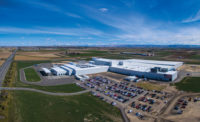
Bull Market Looms Large In 2005
by Dave Kurzawski
When the opening bell rang
on the first day of trading in January 2004, the Class III futures market
had already come to terms with the first-ever case of mad-cow disease in
the United States. Prices fell but returned to average levels in January
once mad-cow hysteria faded with little negative impact on demand for dairy
products.
Whole-herd buyout commitments of the National Milk
Producers Federation’s Cooperatives Working Together program, the
rising price of feed, Posilac reduction by Monsanto and scorching heat that
plagued western states in August 2003 were reasonable concerns. From
a supply standpoint, 2004 was already shaping up to be bullish for dairy
prices.
Class III futures traders tend to focus on the supply
side. Lack of good demand information is one reason. Nevertheless,
commercial disappearance numbers rose and demand strengthened in the first
quarter of 2004 as the overall U.S. economy hummed along a pattern of
steady growth and Americans took to a high-protein/reduced carbohydrate
diet.
Fear of supply/demand imbalances permeated the
industry in the first quarter and cheese prices began their record climb in
March. The average price for Chicago Mercantile Exchange block cheese
finished February slightly above average at $1.39/pound. By the end of
March, the price had risen to over $1.81.
We have been at similar price levels before and
typically move lower rapidly. In this case, however, the price turned
north and continued to the infamous $2 level. The spike in prices was
abnormal given the seasonality of production/price cycles for milk.
Then butter surged to more than $2 per pound, whey topped out at 30
cents and NFDM hit 85.5 cents.
In June, the price of milk was in the throes of a
considerable price correction as the supply/demand situation no longer
appeared to be in the dire straits that produce $20/cwt milk. The remaining
months of 2004 found a CME block-cheese price in the mid-dollar range as
the market reconciled brawny demand with a lackluster growth in supply. By
November, however, prices surged again as demand outpaced supply heading
into the holidays. Block cheese price rallied to $1.90 with butter climbing
past $2. The bull has not yet backed off.
As the U.S. economy grows, we should expect a year of
above-average dairy prices. As of this writing, January to December 2005
Class III futures are at a $13.72 average, nearly $2 above the five-year
average. Nevertheless, expect production to increase as milk-per-cow
numbers begin to recover. Early forecasts call for production to grow by
1.5 to 2 percent on a monthly average basis. While that seems bearish,
demand is expected to grow 2 to 2.5 percent in 2005.
Dry whey and NFDM prices have begun to move to the
upside as well. Whey surpassed 24 cents per pound during the last week of
2004, but look for whey prices to fall to 21 to 22 cents per pound on an
average basis during 2005. NFDM, which ended 2004 at 88 cents per pound, is
already supported at 89 cents on the CME. If milk production should slack
this year, NFDM could jump 2 to 4 cents per pound during 2005.
The U.S. dairy markets should remain in a bull market
during 2005. But heed the lesson of 2004: Seasonal price cycles
the dairy industry has grown accustomed to may have forever changed.
Dave Kurzawski is an account executive with
Chicago-based commodities brokerage Downes-O’Neill LLC.
$OMN_arttitle="Bull Market Looms Large In 2005";?>
.jpg?height=200&t=1623938483&width=200)